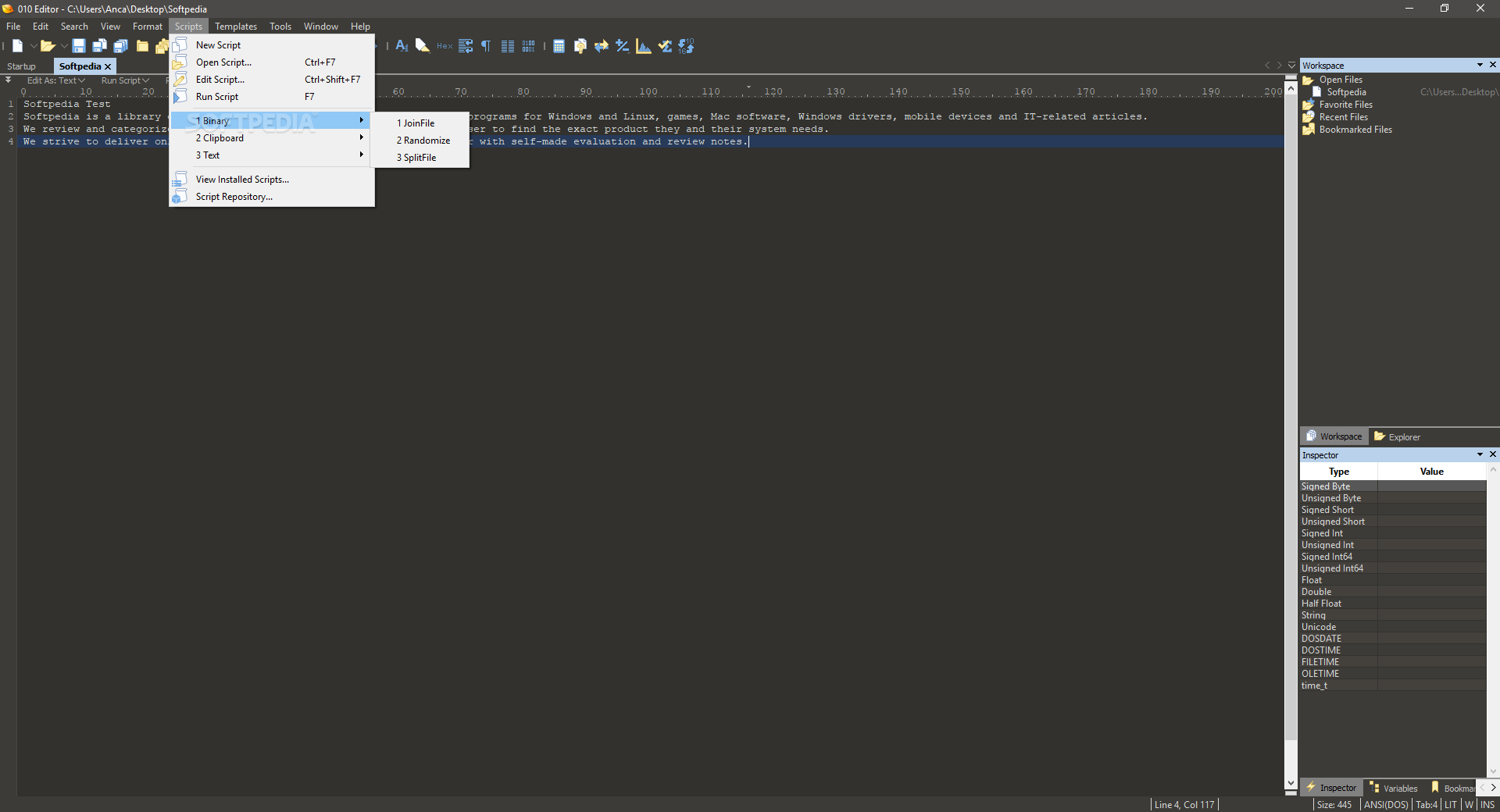

UTF-8 and UTF-16 are “variable width” implementations using a minimum of 8 and 16 bits respectively, UTF-32 is fixed width and always uses 32 bits. There are various Unicode flavours UTF-8, UTF-16 and UTF-32. The solution was to develop Unicode which includes characters for all languages (it uses up to 32 bits – so it can handle a lot of characters…).
010 editor convert string code#
This made for much pain (and switching between code pages) when dealing with multiple languages.
010 editor convert string windows#
Unfortunately 256 characters is insufficient for all characters in all languages so different “code pages” for individual languages were developed (see Windows code page). A great battle ensued and ASCII became the common standard and eventually evolved from a 7 bit (max 128 characters) to an 8 bit (max 256 characters) standard called Extended ASCII.

Some historical background (skip if you want):Ī long time ago in a Galaxy far away there were ASCII (a 7 bit encoding system) and EBCDIC (a technically superior 8 bit encoding system).

Tip: In this case we could also have converted directly into ISO-8859-1 (western character) encoding, which works for most modern languages, and is very similar to CP1252. The second thing is that internet browsers (like Chrome, Firefox etc.) will recognize UTF-8 and display the characters correctly, which makes strings easier to work with in the Translator.įor example if you receive some Spanish text encoded as CP1252 ( Windows code page 1252), it might look like this “ El hardware inal\225mbrico no autorizado se puede introducir f\255cilmente.“, once converted to UTF-8 the “\225” is displayed as “á” which is much easier to read “ El hardware inalámbrico no autorizado se puede introducir fácilmente.“. Why would we want to convert text to UTF-8 encoding? The first thing is that UTF-8 is a standard Unicode implementation so it is compatible with (is a superset of) all single language encodings.

The most common uses of iconv will be for converting incoming text from language specific encodings into the UTF-8 ( Unicode) character set, and converting from UTF-8 to a language specific coding. Use iconv to change character string encoding. If you are already familiar with this you will probably want to skip to the Examples using iconv below and take a look at our iconv API reference. The iconv API is used for converting strings between different character encodings, it exposes the libiconv functionality embedded within Iguana.


 0 kommentar(er)
0 kommentar(er)
